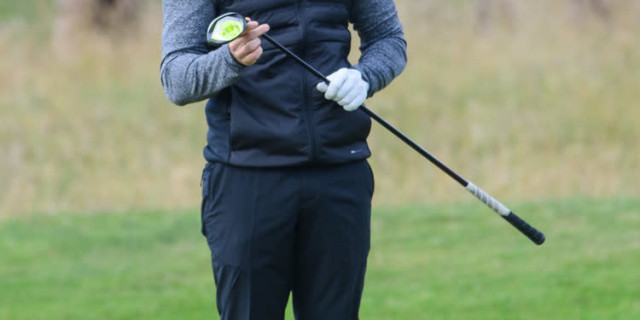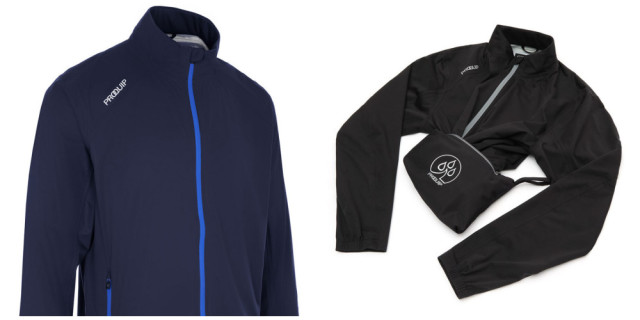
How to Take Care of Your Golf Clubs
IF YOU have bought a set of golf clubs you will know that they are not cheap. We will routinely fork out £300-plus for a driver we use a maximum of 14 times in a round, £200-plus for fairway woods, a similar amount for the latest rescue club, in excess of £500 for a set of irons and £150 for a putter. Even by the most conservative estimates, a decent set of gear is going to set you back at least £1,000.
And do we look after them properly after we have made our purchase? Do we clean them properly? Do we think about the way we put them into our golf bags? Very few of us actually do. And then we are surprised when it comes to trade-in time and we are never offered what we believe our clubs are worth. We reckon it is worth spending some time thinking about how you care for your clubs, during and after a round of golf, and here we give you a few tips which, if followed, will help you to keep them in tip-top condition.
#BackToBasics Tip With Andrew Murray - Checking Equipment
Head Covers
We all have covers on our drivers, fairway woods and rescue clubs - almost without exception, these clubs come supplied with covers. This dates back to the days when woods were actually made of wood and covers were an essential way of protecting them. Anybody who has ever owned a persimmon driver will remember how much care was required to look after them - damp head covers had to be removed to prevent the wood from swelling and the face insert from being pushed out. Polish also had to be applied on a regular basis. Keeping a set of persimmon woods in decent nick was an art form. Fortunately, times have moved on.

In truth, titanium drivers, fairway woods and rescue clubs probably actually don’t need covers. Titanium is, after all, a very tough metal, despite it being one of the lightest alloys known to man. But why would you remove the covers? What is more of a mystery is why sets of irons do not come with covers as a standard extra. Think about it - they clatter against each other no matter whether you carry your clubs or haul them round in a trolley. Furthermore, they will often be bouncing off the expensive graphite shafts attached to your £350 driver and, over time, this will cause damage.
When you purchase that shiny new set of irons that promise to knock six shots off your handicap, why not also treat yourself to a set of iron covers? And, whatever you do, don’t go within a million miles of those dreadful rubber things - they retain moisture and will cause your clubs to sweat and rust.
Store Clubs in Bag Carefully
How do you store your clubs in your bag? Once upon a time, when Jack Nicklaus was still bestriding the fairways and Nick Faldo was little more than a twinkle in his father’s eye, clubs were either dumped into a bag en masse or individually inserted into plastic tubes that usually broke within a couple of rounds and had to be replaced.
Thankfully, we have come a long way since those days, but it is surprising how many club golfers still give little or no thought to the way they put clubs into their bags. Obviously, golf bags come in all shapes and sizes, but most of them contain at least six dividers. They are there for a reason. Most of us carry 14 clubs - the average set comprises a driver, three wood, five wood, rescue club, nine irons and a putter, and one side of the average bag will normally be slightly higher. It seems like common sense, and it is - your driver, fairway woods and rescue club are the longest so should be stored in that section, normally comprising two dividers.
You should have four dividers/compartments left. Put your four, five and six irons in one, your seven eight and nine irons in the next, your wedge, sand wedge and lob wedge in the next and your putter in the final compartment. It all sounds incredibly simplistic, and that’s because it is.

Clean Clubs Regularly
You will get more life from your clubs if you look after them. Do you carry a towel? If not, why not? When you hit a wedge and take a divot, especially in damp conditions, the grooves will fill with dirt - dry it with a towel before you put it back in your bag.
Do you clean your clubs after every round? If not, why not? Irons in particular are designed to perform at their best when the grooves are clear and clean.
So how do you clean a set of irons?
Mix warm water and washing-up liquid in a bucket (or kitchen sink if you have an understanding partner). Fill the bucket with just enough water to cover the head of your golf clubs. Add some washing-up liquid, then stir it in. Make sure the water is warm, not hot, otherwise you could damage the ferrule (the small ring-like plastic that secures the shaft to the clubhead). Submerge the club heads in the water for several minutes. If they only have a moderate amount of dirt or mud on them, five minutes in soapy water should be enough. Use a soft nail brush to ensure all the grooves are clean and free of dirt.
Cleaning your woods is much the same procedure. Fill a bucket with warm soapy water, using a mild detergent. Generally speaking, you should use one teaspoon of washing-up liquid for every three inches of warm water and use just enough water to submerge the club heads without getting the ferrules wet. Soak the club heads in the water for about five minutes. Scrub the clubs with a soft or medium-bristle, non-wire brush. Rinse the club head with clean water and dry it with a clean towel. If you wish, you may wipe the shaft with a damp towel.
You can also buy yourself a groove-cleaning tool, although you a tee will work just as well. Buy a groove sharpening tool and use it regularly. It will keep your grooves clean and sharp and give you the best possible performance.
Don’t forget to dip a washcloth in soapy water and wipe down your grips. Rinse the soap off, using a clean cloth, then dry the grips with a towel. Clean your grips after every few rounds, depending on how much your hands sweat.
About the author

Derek Clements is a seasoned sports journalist and regular Golfshake contributor, specialising in tour coverage, opinion pieces, and feature writing. With a long career in national newspapers and golf media, he has reported on the game across Europe, the United States and Australia. A passionate golfer, he has played and reviewed numerous renowned courses, with personal favourites including Pebble Beach, Kingsbarns, Aldeburgh, Old Thorns and the K Club. His love of the game informs his thoughtful commentary on both professional golf and the wider golfing community.
Tags: gear equipment daily picks













